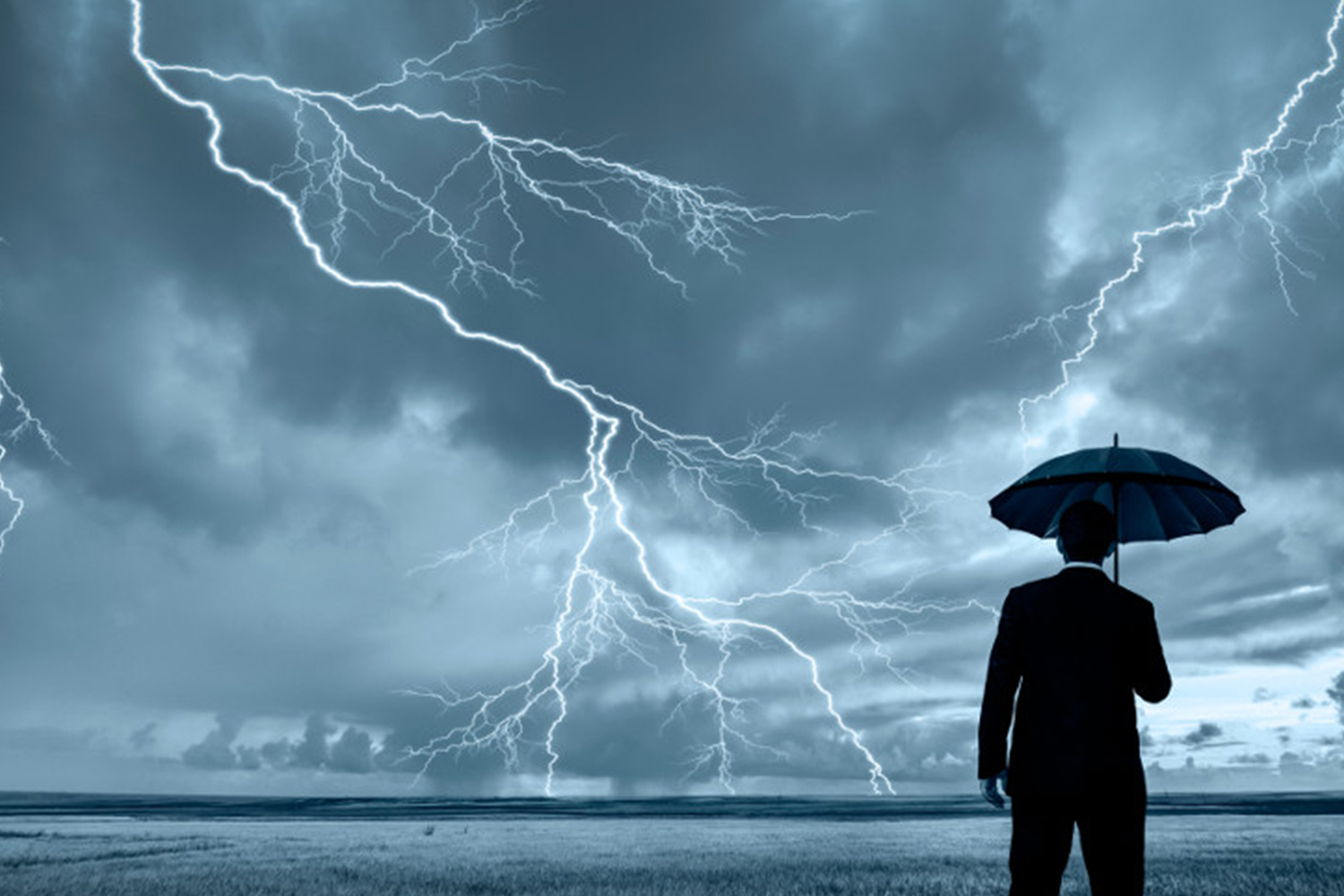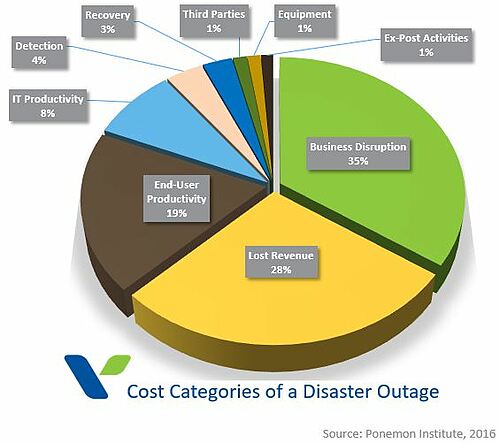3 Steps to Preventing Disaster!

When planning your telecommunications strategy, it’s important to plan for things before they go wrong. Disaster events seem ever more common in today’s world, whether it’s weather, forest fires, or a cyber-attack. In 2017, British Airways had an outage that stranded thousands of passengers and cost them $102 million. The impact to YOUR business from a disaster event is likely to be even more catastrophic. According to FEMA, 40% of businesses never recover from a disaster outage and of the businesses who do survive, another 29% fail within 2 years. Disaster planning is literally a survival imperative for your company.
The common strategy to address this is Disaster Recovery planning. However, Vertical believes that planning for “recovery” is already losing the battle. It is a reactive strategy. You respond to the failure and hope to recover from it.
A more proactive solution is Disaster Prevention. Prevent the disaster from happening rather than just dealing with the results of the disaster. Disaster Prevention uses a few simple steps to develop a plan that is always in place and avoids the disaster completely.
Step 1 Identify the Threats
Disaster Recovery planning focuses on causes. It requires listing every possible way that an outage can occur. Just creating the list is a daunting task and often causes the failure of many disaster planning projects. Once a list is created, it’s far too long to try and address all the possible failure points. You can buy backup systems, and create redundancy plans, but it all gets overwhelming.
Instead, Disaster Prevention focuses on results. There are far more causes of disaster than you can possibly plan for. However, there are a limited number of results in all of these disaster scenarios.
Vertical has identified 3 major results to plan for. This narrows down the needed planning immensely. The 3 results are:
1 Site Outage
In a site outage, your business location can’t be used. The disaster recovery solution is to look at all the threats (weather, power, access to the building, renovation work, etc.) The list is very long. In Disaster Prevention, the focus is simply looking at the outcome. Regardless of the cause the result is the same: the business location is unable to be used.
2 Last Mile Outage
Your business is dependent on the last mile connection to the internet. E-mail, web-browsing, cloud services, Wide-Area Network (WAN) connections to other voices, and Voice Over IP (VOIP) phones all depend on the service that connects to your location and provides service. This is also one of the most vulnerable parts of your entire business. Carrier outages, equipment failures, weather, backhoes, and even an unpaid bill can all cause a failure. The end-result is the same, the business is active and staff are on-site, but all of the services the internet provides are missing. This is the focus of Disaster Prevention.
3 Application Outage
One or more of the critical business applications you use has failed. Whether it’s your phones, CRM, or a specific line of business application, the software you need to run your business has failed. Once again, there could be many causes (a bug, a security threat, an unpaid bill, a user mistake), but the planning focus should be on the result.
Step 2 Quantify the Impact
Once you understand that there are only a few results to defend against, the planning process becomes much simpler. The next step is to determine the impact on your business of each result. There’s no point in spending more money on preventing disaster than the disaster will cost you. This is especially important to do because, according to FEMA, one of the major reasons businesses fail to complete disaster planning is cost.
A simple approach can be used to make an assessment very quickly. The Ponemon Institute regularly surveys data centers on their outages and provides excellent data on organizations who are already doing the most Disaster Recovery type planning. The study revealed an average outage time of 93 minutes. If you aren’t running a dedicated data center that number is going to be at least double, so let’s use 186 minutes or 3.1 hours. Ponemon’s survey also revealed that a disaster outage occurred annually at 100% of their surveyed businesses.
IDC Consulting’s survey of 671 businesses gives us the costs for an average business outage. Plug your business in to determine what the annual costs are for you.

If your business has 30 employees a rough estimate is that outages cost you $33,449 annually. Calculate your own (large enterprises can contact Vertical using the form below for a more in-depth process to make this calculation). If this number doesn’t seem accurate, consider all of the costs associated in an outage.

Step 3 Build a Prevention Strategy
The final step is to build a strategy to prevent disaster. Another key problem with standard disaster planning activities is that they build disaster plans that are implemented in response to outages. Such plans regularly fail due to a host of reasons. All of the reasons boil down to the same simple problem: disaster plans are only used during a disaster. They are generally ignored and rarely practiced.
The solution is to not build a disaster plan, but instead plan for disaster. The important distinction here is to design your systems so they are engineered to automatically deal with the three major outages identified in Step 1. Build disaster prevention right into your systems and there’s no need for implementing a disaster plan; there’s no worry if it will work. Consider these solutions for each type of outage:
1 Site Outage
There are a number of ways to prevent a site outage. One of them is to depend less on a physical location. Telecommuting is rapidly growing in the US today and 43% of workers now telecommute some of the time. Remote workers can provide a host of benefits, but the key advantage in disaster planning is that these workers represent a distributed, redundant workforce that won’t fail due to a site outage. Remote workers with VoIP phones can continue maintaining the business presence regardless of what’s happening at the physical office.
Even in situations where your physical location is key to your business (retail, hospitality, etc.) there are still solutions that you can implement. One of them is automated cell phone routing where phone calls can automatically call the staff on their mobile devices even when the site is not operating. When designed correctly, re-routing automatically happens and there’s no step to take to implement it. Key personnel (customer service, technical support, sales) can continue receiving calls through their mobile Unified Communications (UC) client on their mobile phone anywhere they are located.
2 Last Mile Outage
This outage isolates your business site from the internet and all cloud services and web information. This can be a critical issue with your communications, but there can be solutions here as well.
A key solution to this problem is a technology called Software-Defined, Wide-Area-Networking (SD-WAN). This is a cost-effective solution that allows you to have redundant last-mile internet links at your site to avoid just such an outage. SD-WAN is a device at your premise that can merge two or more internet connections together so that you can avoid last-mile outages, regardless of cause. One of the key advantages is that SD-WAN can use truly disparate internet connections. It can bring together a business cable connection and a DSL connection. The best solutions can even include a cellular internet option to take advantage of high-speed LTE cell connections (like your smartphone uses) to keep your business in operation. SD-WAN also makes this work by prioritizing the use of the smaller fail-over internet circuit to the most important applications.
Other options include local premise-based phone systems that can continue operating even when the internet is gone. This is one of the advantages of such systems. A cloud phone system might continue operating, but your business is isolated from it with a last-mile outage. A local system can address this. If local communications for your site are key, then consider this solution. Vertical can help you with the best of both worlds with a hybrid solution (combining premise and cloud phone systems).
3 Application Outage
When applications fail it becomes impossible to do business. The best solution is to invest in applications that don’t fail. This last item is one of the driving forces behind the growth of cloud applications. A cloud application is definitely one of the ways to minimize this type of outage and it’s a key advantage to cloud-based telephony.
At the same time, it’s important to investigate your cloud solutions and make sure that they are a real disaster solution for you. Remember, the cloud is really just a term for someone else doing the hard work of keeping systems running and applications available.

If cloud applications are your solution for application outages, ask questions about the architecture of the cloud solution, such as is it geographically redundant, how long does it take to failover, what’s the outage history of the application, and what’s the Service-Level Agreement (SLA) guaranteeing the service. If you don’t feel comfortable with these kind of questions, Vertical Communications can help you answer them, but make sure you address them or you are leaving yourself vulnerable. A good cloud provider can be your guarantee against application outages.
Implementing Your Disaster Plan
Vertical’s simple three-step program can help you avoid disaster and major costs to your business. Disaster prevention is a superior planning model that focuses on the three major outage results rather than a vast array of potential causes. You can determine an appropriate budget by quantifying the potential impact to your company using Vertical’s easy rule-of-thumb method (or by digging in with Vertical to do a much more detailed risk analysis for the most accurate answers). Finally, plan for solutions that build right into the architecture of your communications solution so that nobody has to pull out an out-of-date disaster recovery plan when disaster strikes! Avoid the problems completely by architecting a clear Disaster Prevention plan.
Vertical Communications can help you design your Disaster Prevention plan. Contact us today!



